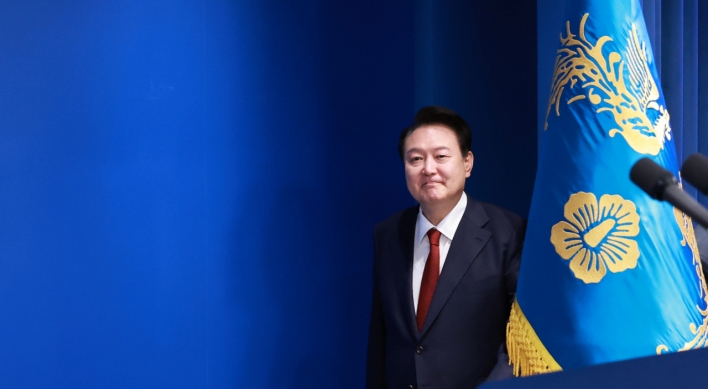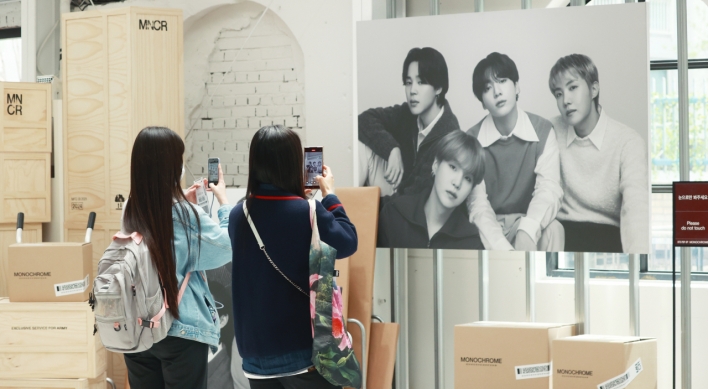
이성하씨는 하루 일과가 끝나고 퇴근을 하면 레고를 한다. 카피라이터 이씨(32)에게 레고는 단순한 취미생활이 아니다. 작은 블록들을 조립하고 있을때면 그는 어린시절로 돌아간 듯한 느낌을 받는다.
“레고를 하면 일과 결혼문제 같은 모든 스트레스로부터 벗어날 수 있다” 라고 이씨는 말했다.
미혼인 이씨는 매달 약 50만원 정도의 돈을 레고와 장난감을 구입하는데 투자한다. 하지만 그 투자는 항상 의미가 있다. 그가 자라오면서 잃었던 동심을 되찾게 해주기 때문이다.
그는 “키덜트”에 속한다.
김성환(39)씨는 친구의 집에서 레고를 하던 유년시절을 회상하면서 “나는 레고에 반해버렸다”라고 말했다. “이 작은 블록을 꼈다 뺐다 하며 무수히 많은 것을 만들어낼 수 있다는 사실이 정말 흥미로웠다.”
키덜트란 육체적으로 성장했지만 감성과 취향이 어린아이 같은 사람들을 일컫는 용어이다.
일과 자식 관련 문제들에 치여 압박감을 느끼며 살아가는 것이 대부분 현대인들의 일상이다.
사업가 황재호씨는 “왜 우리들을 반은 아이, 반은 성인이라고 일컫는지 이해할 수 없다. 우리는 그저 취미를 즐기려는 사람들일 뿐이다” 라며 “골프에 백만원 이상을 투자하는 것은 괜찮고, 같은 값을 레고에 투자하는 것은 이상한 것이냐”고 말했다.
월트디즈니코리아 부사장인 동시에 최고마케팅경영자인 심정호씨는 “키덜트는 단순히 아이들 용품을 구입하는 소비자들이 아니다”라고 했다.
"우리는 더 이상 애니메이션과 캐릭터를 아이들만을 대상으로 하지 않는다. 피규어를 수집하는 것은 예술품을 수집하는 것과 같은 것이다.”
끊임없이 일하며 일상에 지친 현대인들은 삶의 낙을 되찾기 위해 어린이 용품에 관심을 돌리곤 한다.
“많은 30, 40대들이 경제적, 개인적 사정으로 그만둬야만 했던 어린시절 취미를 되찾으려고 한다. 이러한 현상에는 유년시절에대한 ‘그리움’이 큰 역할을 하고 있다.”
독특한 취미를 찾는 현대인들의 성향은 키덜트 문화의 확산을 보여주는것이라고 소셜컴퓨팅연구소의 한상기 박사가 말했다.
키덜트 트랜드 확산에 영향을 끼치는 것들에는 레고, 건담, 피규어, 디즈니 캐릭터 등이 있다.
그들에게 이것은 단순한 취미생활이 아닌 예술이다.
“이러한 취미생활을 갖기 위해서는 시간, 돈, 노력이 필요하다” 프라모델을 하는 민경찬(38)씨가 말했다.
사람들이 자신과 같은 취미를 가진 사람을 찾고 싶어하는 것처럼, 키덜트도 자신의 취미를 공유하고 싶어하는 것이다.
(영문: 코리아헤럴드 이지윤, 정헌의 기자, 한글: 임우정 인턴기자)
<관련영문기사>
Stay young, stay fun
‘Kidults’ return to chilhood pursuits to escape stress of adult life
By Jeong Hunny and Lee Ji-yoon
Lee Sung-ha builds Lego for hours after work. The tiny plastic bricks are not just a pastime for the 32-year-old copywriter. His mind flies back to the time when life was simple, joyful and free from stress.
“That is the only moment when I can fully relax from all the stress factors like work and marriage concerns,” Lee says.
Lee, unmarried, spends some 500,000 won ($448) on Lego and other toys every month and the investment always pays off. The collections help him relive the pure childhood pleasure he lost while growing up.
He may be one of the “kidults,” or adults with kids’ hobbies, who have emerged since the mid-2000s as a distinct sociocultural phenomenon and an important marketing target for consumer and entertainment businesses.
Lego, die-cast car models, and miniature World War II Tiger tanks are among their favorites.
“It was love at first sight,” Kim Sung-wan, 39, recalls of his first experience with Lego at his friend’s home when he was a child.
“It was fascinating to build so many things with these small blocks and be able to take them apart to build even more things.”
That‘s still the case for Kim, who currently heads an on and offline Lego community, Bricksworld.
Cultivating juvenile tastes, those people are often considered just growns-up in body but kids in mind. But most of them have busy lives with adult responsibilities, respectable jobs and sometimes children of their own.
Kidult entrepreneur Hwang Jae-ho disagree with the terminology.
“Why call us half kid and half adult? We’re normal people just trying to enjoy our hobbies, as much as anyone else,” he says.
“And how is spending $1,000 on golf irons respectable while spending the same amount of money on plastic World War II battleships isn‘t?”
Kidult consumers are not simply adults who purchase kid products, says Jay Shim, vice president and chief marketing officer of Walt Disney Company Korea.
“We no longer limit animation or character content as children’s exclusive property. In the case of collectible figures, their degree of perfection is comparable to that of collection items and art pieces.”
Men and women now tired of living up to the demands of the modern corporate world -- keep working, don’t sleep, and don‘t whine about it -- are turning to kidult products to remind them that life should have its share of fun.
“I think many people in their 30s and 40s are returning to childhood hobbies they had abandoned for financial and personal reasons. People in that age bracket now have the social independence to pursue those kinds of hobbies. Nostalgia also plays a big role,” says Kim.
The increasing search for a unique identity and consequent encouragement given to formerly quiet individuals to open up their interests also explains the growth of kidult culture, according to Han Sang-ki, founder of the think tank Institute of Social Computing.
The up tick in the number of social gatherings that focus on Lego, Gundam models, radio-controlled toys, miniature figurines, and Disney characters can be attributed to this trend.
To some, this is an art.
“To be good at it, you must divest hours, weeks and months of your time, money and effort,” says Min Kyung-chan, a 38-year-old plastic model hobbyist.
Some plastic model buyers do historical research to perfect the finishing touches on their replicas. After buying a World War II German Panzer tank plastic model, one buyer researched the designs and layout of the 1940s armored vehicle so that he could paint the tank with the precise colors.
These enthusiasts are a new class of experts, says Park Kyu-sang, a professor of sociology at Gachon University.
“They are the pioneers in these fields. By extensively researching, buying and otherwise stimulating related industries they are generating externalities that create jobs, better market information, and higher-quality products.”
The coming of Hollywood blockbusters about formerly obscure and “nerdy” comic-book heroes such as Ironman, Batman and Superman helped to push kidult culture into the spotlight in Korea, says Hwang. Korean hobbyists benefited because topics that were obscure and even shunned came to be considered “cool” and attractive.
“I think this growth represents a deeper understanding people here in Korea have in terms of diversity, mutual respect and tolerance towards difference,” Min says. “People are becoming more open and accepting.”
Everyone has a fundamental incentive to show off and look for people who have similar interests, adds Hwang.
“Just look at Facebook. Random people talk about, really, nothing. But still, people like showing friends what they did today, what they are thinking about at the moment, what they ate for lunch, and other trivial things.
“Kidults are no different. They have interests that they want to share with friends, no matter how seemingly frivolous.”
(hj257@heraldcorp.com)(jylee@heraldcorp.com)
‘Kidults’ return to chilhood pursuits to escape stress of adult life
By Jeong Hunny and Lee Ji-yoon
Lee Sung-ha builds Lego for hours after work. The tiny plastic bricks are not just a pastime for the 32-year-old copywriter. His mind flies back to the time when life was simple, joyful and free from stress.
“That is the only moment when I can fully relax from all the stress factors like work and marriage concerns,” Lee says.
Lee, unmarried, spends some 500,000 won ($448) on Lego and other toys every month and the investment always pays off. The collections help him relive the pure childhood pleasure he lost while growing up.
He may be one of the “kidults,” or adults with kids’ hobbies, who have emerged since the mid-2000s as a distinct sociocultural phenomenon and an important marketing target for consumer and entertainment businesses.
Lego, die-cast car models, and miniature World War II Tiger tanks are among their favorites.
“It was love at first sight,” Kim Sung-wan, 39, recalls of his first experience with Lego at his friend’s home when he was a child.
“It was fascinating to build so many things with these small blocks and be able to take them apart to build even more things.”
That‘s still the case for Kim, who currently heads an on and offline Lego community, Bricksworld.
Cultivating juvenile tastes, those people are often considered just growns-up in body but kids in mind. But most of them have busy lives with adult responsibilities, respectable jobs and sometimes children of their own.
Kidult entrepreneur Hwang Jae-ho disagree with the terminology.
“Why call us half kid and half adult? We’re normal people just trying to enjoy our hobbies, as much as anyone else,” he says.
“And how is spending $1,000 on golf irons respectable while spending the same amount of money on plastic World War II battleships isn‘t?”
Kidult consumers are not simply adults who purchase kid products, says Jay Shim, vice president and chief marketing officer of Walt Disney Company Korea.
“We no longer limit animation or character content as children’s exclusive property. In the case of collectible figures, their degree of perfection is comparable to that of collection items and art pieces.”
Men and women now tired of living up to the demands of the modern corporate world -- keep working, don’t sleep, and don‘t whine about it -- are turning to kidult products to remind them that life should have its share of fun.
“I think many people in their 30s and 40s are returning to childhood hobbies they had abandoned for financial and personal reasons. People in that age bracket now have the social independence to pursue those kinds of hobbies. Nostalgia also plays a big role,” says Kim.
The increasing search for a unique identity and consequent encouragement given to formerly quiet individuals to open up their interests also explains the growth of kidult culture, according to Han Sang-ki, founder of the think tank Institute of Social Computing.
The up tick in the number of social gatherings that focus on Lego, Gundam models, radio-controlled toys, miniature figurines, and Disney characters can be attributed to this trend.
To some, this is an art.
“To be good at it, you must divest hours, weeks and months of your time, money and effort,” says Min Kyung-chan, a 38-year-old plastic model hobbyist.
Some plastic model buyers do historical research to perfect the finishing touches on their replicas. After buying a World War II German Panzer tank plastic model, one buyer researched the designs and layout of the 1940s armored vehicle so that he could paint the tank with the precise colors.
These enthusiasts are a new class of experts, says Park Kyu-sang, a professor of sociology at Gachon University.
“They are the pioneers in these fields. By extensively researching, buying and otherwise stimulating related industries they are generating externalities that create jobs, better market information, and higher-quality products.”
The coming of Hollywood blockbusters about formerly obscure and “nerdy” comic-book heroes such as Ironman, Batman and Superman helped to push kidult culture into the spotlight in Korea, says Hwang. Korean hobbyists benefited because topics that were obscure and even shunned came to be considered “cool” and attractive.
“I think this growth represents a deeper understanding people here in Korea have in terms of diversity, mutual respect and tolerance towards difference,” Min says. “People are becoming more open and accepting.”
Everyone has a fundamental incentive to show off and look for people who have similar interests, adds Hwang.
“Just look at Facebook. Random people talk about, really, nothing. But still, people like showing friends what they did today, what they are thinking about at the moment, what they ate for lunch, and other trivial things.
“Kidults are no different. They have interests that they want to share with friends, no matter how seemingly frivolous.”
(hj257@heraldcorp.com)(jylee@heraldcorp.com)









![[K-pop’s dilemma] Time, profit pressures work against originality](http://res.heraldm.com/phpwas/restmb_idxmake.php?idx=644&simg=/content/image/2024/05/08/20240508050705_0.jpg&u=20240508171126)

![[K-pop's dilemma] Is Hybe-Ador conflict a case of growing pains?](http://res.heraldm.com/phpwas/restmb_idxmake.php?idx=644&simg=/content/image/2024/05/07/20240507050746_0.jpg&u=)






![[Today’s K-pop] Stray Kids to drop new album in July: report](http://res.heraldm.com/phpwas/restmb_idxmake.php?idx=642&simg=/content/image/2024/05/09/20240509050659_0.jpg&u=)